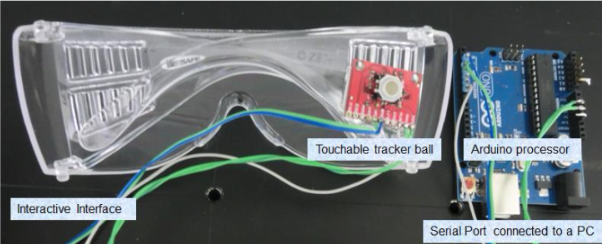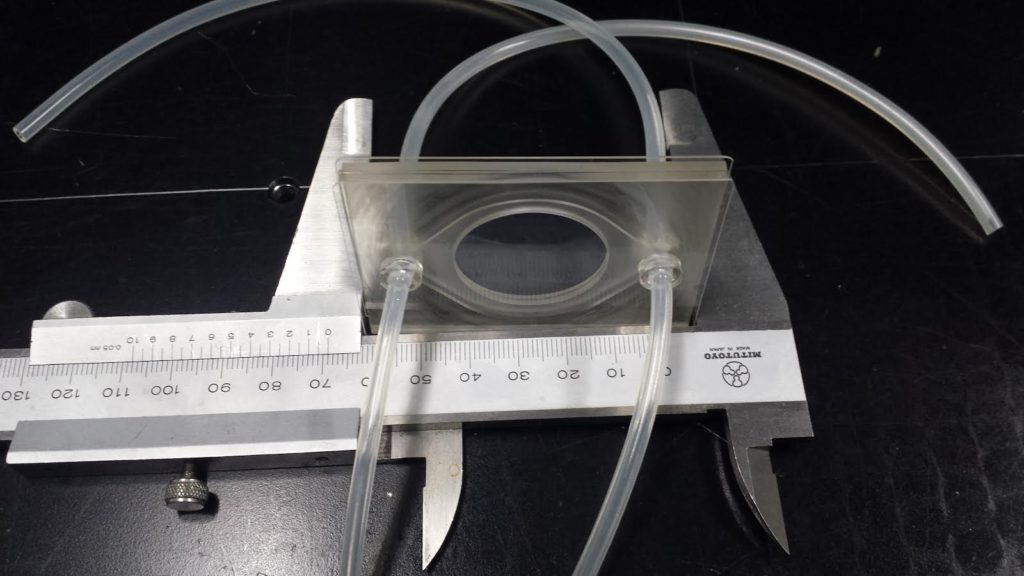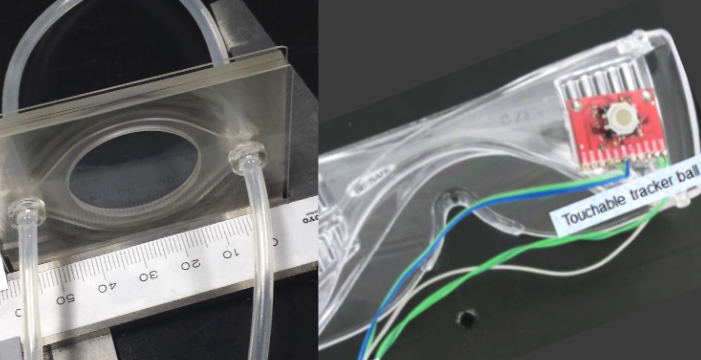We propose here a pair of diopter-adjustable eyeglasses for presbyopia correction. Optical power is tuned by the wearer through a miniature roller ball attached to the right bridge of the glasses, a simple way to detect the squinting gesture that people often do to reduce the eye aperture and bring the image in focus. Opposite rolling directions cause a rapid, positive or negative step-by-step change on the optical power.

Our preliminary experiments demonstrate that it should be possible to use this system as a pair of active correction glasses for presbyopia, without the need of more complicated setups (such as detecting the direction of gaze and/or distance to the object to be seen).

The variable lens is a liquid based lens that capable of changing its optical power in a range well over what is necessary for correcting presbyopia, while at the same time doing so in the order of seconds (the actual lens can tune its power in a fraction of a second).

An important aspect of this (and future) works is the real-time, interactive response of the glasses: the user could rapidly change the optical power by a simple manual gesture on the side of the googles (much like the Google Glass command) but more interestingly and as demonstrated in this work, the system can rely on natural gestures and reflexes not relying on hand gestures. This can be done mechanically – using the deformation of the glasses frame or as demonstrated in this work, by a simple mechanism detecting the squinting gesture (other means could exploit electro-myography, by embedding electrodes in the frame).
A more complex system – albeit in the reach of present wearable technologies – could come handy in particular situations or for people with reduced head/neck mobility: detecting the direction of the gaze, computing the distance to the target, and adjusting the corrective power accordingly. Alternatively, if the mobility problem comes from the eyes, a laser pointer could be used to indicate the target to “focus”.
References
- Lihui Wang, Alvaro Cassinelli, Hiromasa Oku, Masatoshi Ishikawa, A pair of diopter adjustable eyeglasses for presbyopia vision correction, SPIE Optics + Photonics 2014 (San Diego, California, USA, 2014.08.18) / Proc. of SPIE, Vol.9193, 91931G-1
- Lihui Wang, Hiromasa Oku, Masatoshi Ishikawa, An improved low-optical-power variable focus lens with a large aperture, Optics Express, Vol.22, Issue 16, pp. 19448-19456 (2014)
- Lihui Wang, Hiromasa Oku, Masatoshi Ishikawa, Variable-focus lens with 30 mm optical aperture based on liquid–membrane–liquid structure, Applied Physics Letters, Vol.102, 131111 (2013).
- For more: http://www.k2.t.u-tokyo.ac.jp/mvf/AdaptiveEyeglasses/index-e.html
